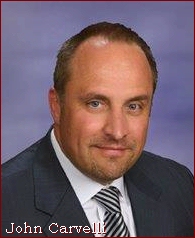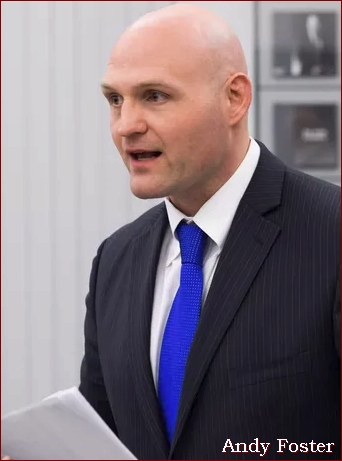
CURRENT NEWS
| |||||||||||||||||||||||||||||
|
|
_____ |
_____ |
_____ |
_____ |
|||||||||||||||||||||||||
FRIDAY, December 18th, 2015, AT 2:40 PM/ PST
Addition Of Weight
Classes, IV Ban...
Proposed At Historic Weight-Cutting Summit.
CSAC
Executive Officer Andy Foster (R) and Chairman John Carvelli (L) put together a
weight-cutting summit in Los Angeles.
By
Marc Raimondi of
www.mmafighting.com

LOS ANGELES -- One of the first matters approved by the new MMA rules and regulations committee could be a major one.
Chairperson Sean Wheelock said Thursday at the California State Athletic Commission's ( CSAC ) weight-cutting summit that the committee has approved a plan to alter and add weight classes to the unified rules of mixed martial arts.
The outline for the new divisions would be as follows, by division: 115, 125, 135, 145, 155, 165, 175, 185, 195, 205, 225, 265 (heavyweight) and super heavyweight. The 170-pound division would be abolished.
The 10-person committee approved this change by a vote of 9-0 with one abstention. The plan will now go to the medical committee, chaired by CSAC executive officer Andy Foster. If approved there, Association of Boxing Commissions president Mike Mazzulli (L) will send it to the board of directors and it will be voted on by the ABC body at the annual meeting in August.
Of course, any changes to the Unified Rules of MMA would then have to be adopted by the individual state and tribal athletic commissions. A promotion like the UFC or Bellator would also be under no obligation to adopt them, but Jeff Novitzky, (L) the UFC vice president of athlete health and performance, said he has spoken with UFC matchmakers Joe Silva and Sean Shelby (R) and they are not against changes.
"It's been very preliminary with them, but I've had no opposition from them on those proposals as long as it was done in a gradual manner," Novitzky told MMA Fighting. "It's something I think they're constantly evaluating even before this weight-management issue came along."
An overhaul of the weight classes could be the first regulatory salvo against extreme weight cutting, which Foster has called the biggest problem facing the sport today. MMA referee John McCarthy, a rules committee member, said an adjustment of the weight classes would not mean much, though, unless other new regulations were there to support it.
"The weight classes are just one small element," McCarthy said. "If it's just the weight classes, then it's doing nothing. It's not gonna change anything. It all has to be in conjunction."
If stricter weight-cutting rules are implemented, encouraging fighters to compete closer to their natural weight, McCarthy said it's important to give fighters more options with regards to weight class.
For years, fighters have cut an exorbitant amount of weight to gain a competitive advantage in size and strength over their opponent. It's a practice that has been carried over from amateur wrestling. Dr. Edmund Ayoub, the vice president of the Association of Ringside Physicians, said Thursday that any advantage gained by cutting an extreme amount of weight and then rehydrating is really just mental.
"It's a myth that you can be dehydrated, put on 30 pounds before the fight and actually be stronger," Ayoub said. "You can't."
As studies have shown, Ayoub said, the risk factor for concussions also "increases markedly" after a steep weight cut due to a reduced amount of fluid around the brain.
Ayoub added that a fighter might feel better after using an IV to rehydrate for about 20 minutes, but from a physiological perspective it's impossible for the body to replenish all of its fluids after a cut like that in just 24 hours.
There's an argument that taking away the IV option from fighters trying to rehydrate is dangerous. No one wants to see a fighter compete while dehydrated. But Ayoub said that's happening anyway and feeling better with an IV is not the same thing as actually being better physically. After losing a large amount of weight, a fighter wouldn't even be fully rehydrated 48 hours after the weigh-in, he said -- IV or no IV.
Ayoub is in favor of enacting stricter rules when it comes to dehydrated fighters. He'd like to see fights cancelled if athletes come in dehydrated.
The World Anti-Doping Agency (WADA) bans IVs for athletes and USADA brought that rule over to the UFC starting Oct. 1. Novitzky said that since the IV ban UFC fighters have been arriving in town for fight week on average 5 percent above their weight class. Before the ban, Novitzky said, it was more like 8 percent over.
WADA bans IVs because they can be used to mask the use of performance-enhancing drugs. But the stakeholders in the room Thursday were basically unanimous that using IVs should not be a normal practice for rehydration.
"If you need an IV to rehydrate, you're probably in the wrong weight class," Foster said.
Added Bellator regularly affairs head Cory Schafer: "What does it say about this sport that fighters have to use something reserved for hospitalization to recover just from preparation?"
Mazzulli said that he would bring a ban on IV use to the ABC body in August for a vote. Foster said that he is considering an emergency provision in California to ban IVs right away and he could present that to the commission at its next meeting in February.
Novitzky's experience with no IVs in the UFC has been a good one for the most part. He said fighters have told him they have felt better in the Octagon due to better weight management without the IV "crutch." McCarthy said he has heard the same things. Novitzky said that fighters have told him that after a bad weight cut, a grazing blow alone could make them feel dizzy.
"It's difficult," Novitzky said. "There's some extreme situations. Thankfully, they're getting a little bit less for us since we put our IV ban on. I'm seeing real positive stuff. Nevertheless, it is definitely the fight before the fight. I've seen it firsthand."
The fighters in attendance had a mixed reaction to a potential ban on IVs throughout MMA. Bellator featherweight Bubba Jenkins was not a fan of it, but Bellator lightweight Josh Thomson thought it was a good idea. He said he has only used an IV once during his successful, 17-year career and didn't notice the difference. Thomson, 37, said he cuts less than 15 pounds to fight and credits that for his longevity in the sport. He is also in support of more weight classes, especially with a ban on IVs.
Jenkins underscored the education aspect of things. He and Thomson both said that weight cutting is so steeped in the culture of the sport that until fighters understand that it isn't actually giving them an advantage, it will continue. Jenkins acknowledged that any advantage gained by cutting weight is "80 percent mental" and hammered home over the years by coaches and peers. He added that a fighter must be told that his or her performance will be negatively affected by a harsh weight cut -- the fact that it's unhealthy will not be a deterrent.
"The use of specific gravity tests to determine if a fighter is dehydrated going into a fight was also discussed. A study done by doctors in 2013 showed that 39 percent of fighters went into the cage dehydrated", Foster said.
A test to determine a fighter's minimum allowable competition weight was batted around as well, but Jenkins described how that system could be gamed -- since he did it himself as a national champion college wrestler at Arizona State. Jenkins also said the specific gravity test could be beaten by savvy fighters.
With Ayoub mentioning that a fighter would be better off with more time to hydrate, a weigh-in occurring two or three days before a fight was considered. If that were to be the case, then there would have to be a second weigh-in the day of the fight to make sure a fighter didn't go over a certain percentage of his or her weight after the first weigh-in.
Boxing organizations have similar rules, though weight cutting is not nearly as much of a problem in that sport. Doctors in attendance proposed that if a fighter was 7 percent or more over his or her body mass in the second weigh-in, he or she would be fined. If the fighter was 10 percent or more over, the fight would be off.
Foster said he is interested in bringing a pilot program to CSAC in the coming months with similar rules for data-collection purposes. Mazzulli said he would discuss findings from that program with the ABC body at the annual meeting.
Along with the IV ban, the weight class overhaul seemed to be the most popular proposal at the summit. Forrest Griffin, the UFC vice president and former light heavyweight champion, expressed worry that it would leave some of the heavier weight classes too thin. He said he would "love" to have a women's 125-pound division in the UFC, but there wouldn't be enough fighters to support it.
McCarthy said that the weight class alterations don't have to be fully adopted by the UFC. They would be primarily for regional shows and the like -- and important if more weight-cutting rules take shape.
"The UFC doesn't have to use a weight class," McCarthy said. "They don't have to use the 170-pound weight class right now. They don't use the 145-pound women. There's weight classes they don't utilize. They can do the same thing with any weight class they want. They're a promotion and they have a right to say, 'We don't want to use this weight class.' This is not about the UFC. This is about MMA. And there is MMA going on all over the world where we've got weight-cutting problems."
The new rules and regulations committee that passed the new weight class proposal is comprised of McCarthy, Randy Couture, Matt Hughes, Jeremy Horn, referee Rob Hinds, referee Kevin MacDonald, ringside physician David Watson, Georgia Athletic and Entertainment Commission director Matt Woodruff and Brian Dunn, the head of the Nebraska Athletic Commission.
While the UFC is the leader, and Bellator and World Series of Fighting are up there as well, Mazzulli said that it's important not to lose sight of the hundreds of regional and local fighters competing every weekend across the country.
"That's where everything is," Mazzulli said. "Everyone is working to become a Bellator or UFC or World Series fighter. These are the kids I worry about. I worry about the kids that don't know how to hydrate properly, how to cut weight properly. So it's a big deal."
The proposed weight class changes, ban on IVs and CSAC pilot program will likely only be the start. Weight cutting is a serious problem in MMA and that's why more than 40 of the sport's movers and shakers showed up Thursday.
"It's a new day," Mazzulli said. "We really have to move forward. The industry is young and we have to move along with the industry and make sure we're doing what's best for the fighters."
ISCF TO MOVE FORWARD ON SUMMIT SUGGESTIONS...
In conjunction with yesterdays Historic Weight-Cutting Summit, the ISCF (International Sport Combat Federation) is already prepared to make immediate changes to their worldwide rules and regulations. Prior to the Summit the ISCF had already been working on the changes and getting prepared to announce them on the ISCF web pages. Although it will only make a small impact, the ISCF is eager to be at the forefront on new MMA regulations that will eventually make MMA a safer sport.
ISCF HAD THOUGHT ALONG THE SAME LINE...
Everyone here in the ISCF (International Sport Combat Federation) is happy to hear the news above. More so because the ISCF had tried to implement smaller weight spreads in the heavyweight region back in March of 2011 (See Article By Clicking HERE). However, since ISCF Regulation was optional in every state, many opted to not accept the newly added weight classes as well as criticize them. Finally, this past summer of 2015, the ISCF did away with the added weightclasses and went back to the original ISCF weightclasses that were created back in 1999. All of us here would like to say, Great work Andy Foster and the California State Athletic Commission! Ignore those critics out there and keep moving forward in "DOING THE RIGHT THING!" Cheers to the California State Athletic Commission's efforts on making our sport safer!

|
___ |
___ |
___ |
___ |
___ |
___ |
___ |
___ |











